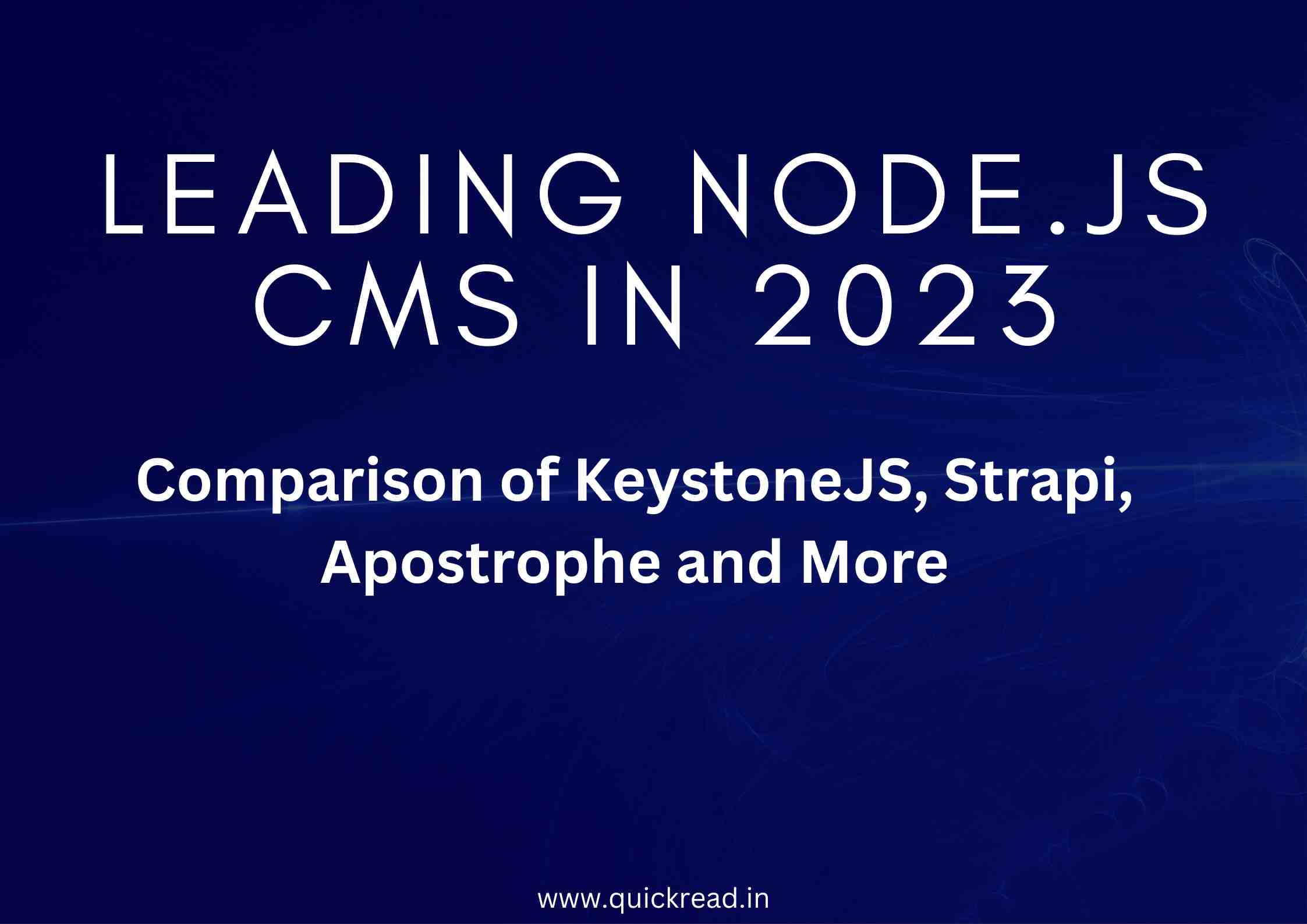Introduction
Node.js has become a highly popular platform for building scalable web applications thanks to its speed, event-driven model, and rich ecosystem. This has led to many CMS (content management system) solutions being developed on Node.js as well.
In this comprehensive guide, we will explore the top 5 open-source Node.js CMS options worth considering for projects in 2023 based on features, extensibility, and ease of use.
Top 5 Node.js CMS
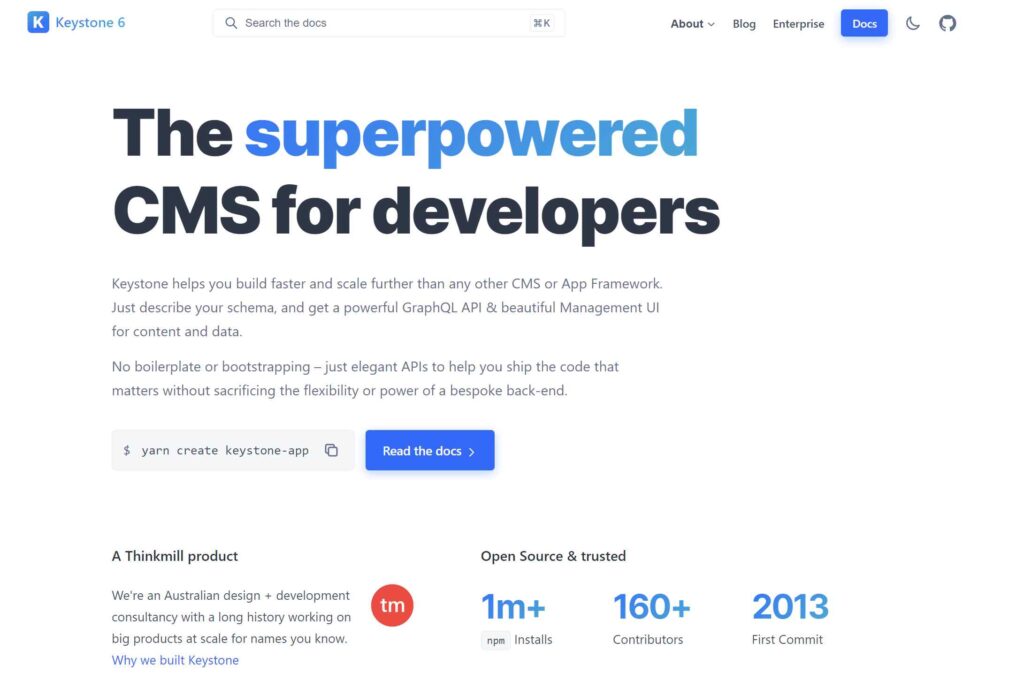
1. KeystoneJS
KeystoneJS is a flexible and extensible Node CMS and web application platform. Some major features:
- Headless CMS – It provides a GraphQL API for fetching content from the backend. This decoupled architecture provides greater flexibility.
- Admin UI – Comes with an intuitive Admin UI and schema generation for managing content models.
- Customization – Highly customizable through code. Developers can build custom field types, pages, APIs, apps and more.
- Scalability – Built for scale and production use thanks to its GraphQL API and MongoDB support.
- Plugins – Extensible architecture via custom plugins. Integrations available for services like Cloudinary.
It is a great choice for developers wanting a GraphQL based headless CMS with robust customization capabilities.
2. ApostropheCMS
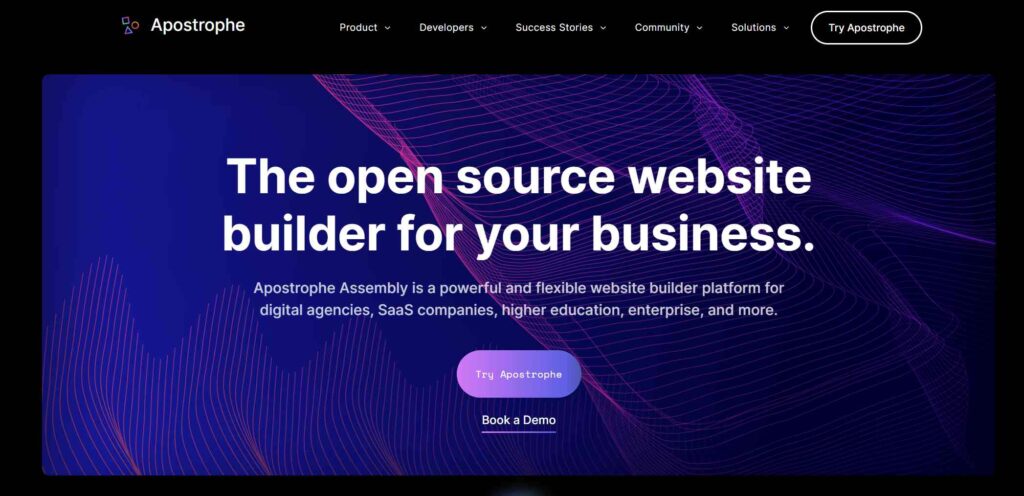
ApostropheCMS is a Node.js content management framework supporting in-context editing and headless content delivery.
Key features of ApostropheCMS:
- In-Context Editing – Edit content directly on rendered pages for rapid editing and creation workflow.
- Headless Architecture – Decoupled backend to fetch content over REST and GraphQL APIs.
- Custom Content Types – Extend the CMS by creating custom content types as needed.
- Flexible Widgets – Reusable widgets make it easy to build customized pages and components.
- Jamstack Integration – Plays well with modern Jamstack workflows.
- Express + MongoDB – Built on Express.js web framework and uses MongoDB for storage.
It is great for building customizable content-rich websites like blogs, magazines, documentation sites etc.
Strapi
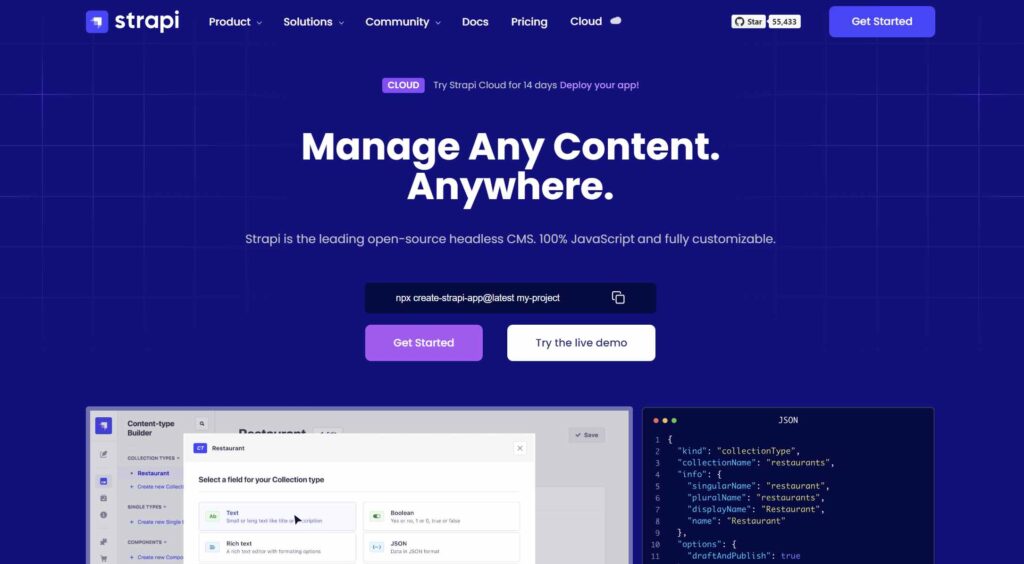
Strapi is a flexible open-source Headless CMS focused on providing a robust content API.
Key advantages of Strapi:
- Developer Experience – Strapi puts developers first and is easy to use and customize.
- Database Agnostic – Supports SQL, MongoDB, PostgreSQL, MySQL and more.
- Admin Panel – Powerful customizable admin dashboard and interface.
- Permissions – Granular user roles and access control systems.
- Plugins – Extend functionality via a rich ecosystem of community plugins.
- APIs – Build content APIs fast for use in any frontend app or website.
It is great for JAMstack sites, mobile apps, and multi-platform content delivery use cases.
4. Factor
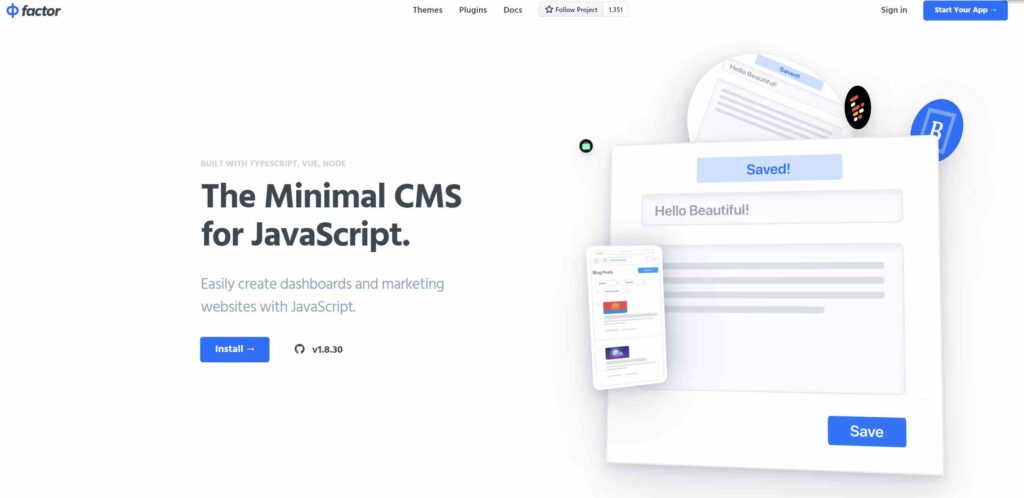
Factor markets itself as a JavaScript CMS for developers focused on modularity, extensibility and flexibility.
Some major highlights:
- Modular Architecture – Components can be mixed and extended to customize the CMS.
- Developer Friendly – Made for developer control and no coding constraints.
- React Admin UI – Uses React to create a great admin interface.
- Deployment Options – Works with headless or traditional deployment.
- Bring Your Own Frontend – Use your preferred frontend framework.
- APIs – Exposes content via GraphQL and REST APIs.
It enables building a CMS tailored exactly to your technology stack and requirements.
5. Webiny
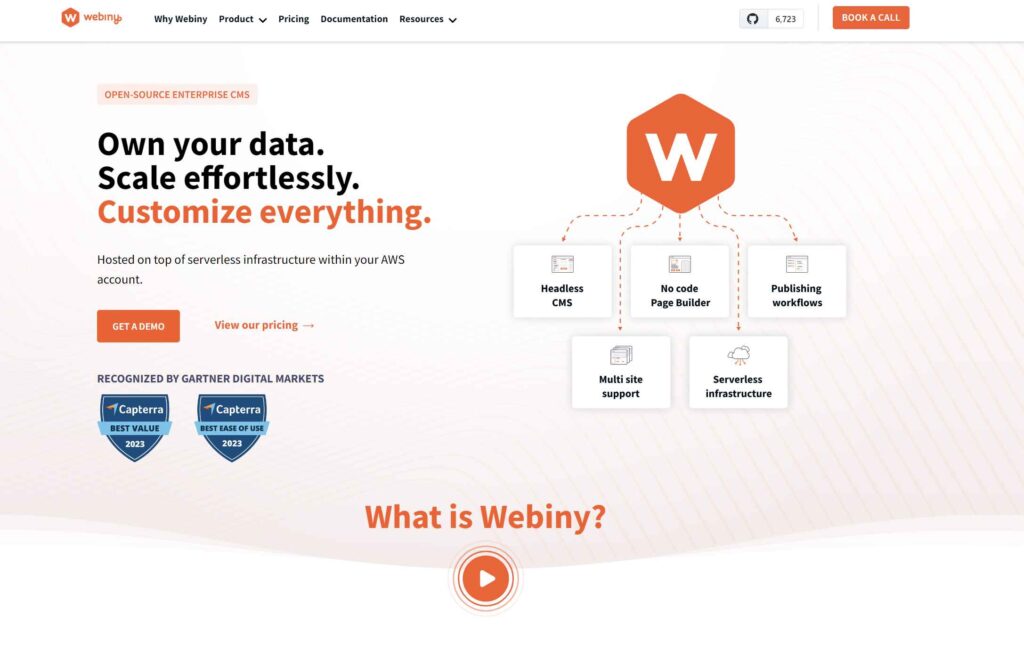
Webiny is an open-source headless CMS and web app framework powered by Node.js and React.
Notable features:
- Headless CMS – Flexible content model management.
- Built-in Page Builder – Drag and drop page composer using custom React components.
- Extensibility – Modular architecture to extend functionality.
- Serverless Friendly – Built for serverless deployments on Netlify and AWS.
- GraphQL API – Content delivered via GraphQL.
- Configurable Admin – Customizable admin panel.
Webiny suits Jamstack applications that require a headless CMS with smooth content editing experience.
Frequently Asked Questions
- Which open source Node.js CMS is best for customization and extensibility?
KeystoneJS is a great option if you need to deeply customize your CMS. It provides a lot of flexibility to build custom APIs, fields, and apps.
- What is the benefit of a headless CMS architecture for Node.js based CMS?
A headless CMS decouples content management from content delivery. This allows greater flexibility in delivering content to any device or platform using APIs.
- Which Node.js CMS works best for React based projects?
Webiny and Factor are good choices as they provide React-based admin interfaces so integrate nicely with React frontend projects.
- Which top Node.js CMS choice is fully JavaScript based?
KeystoneJS is built entirely in Node.js and JavaScript, so is a good match if you want end-to-end JavaScript technology.
- What Node.js CMS options provide a GraphQL API?
KeystoneJS, Strapi, and Webiny support GraphQL APIs for flexible content delivery tailored to your frontend stack.
Conclusion
These top 5 Node CMS solutions enable powerful content workflows while letting you leverage JavaScript across the full stack. For modern web projects in 2023, they provide the benefits of Node.js development while being tailored for easier content editing and management at scale.


